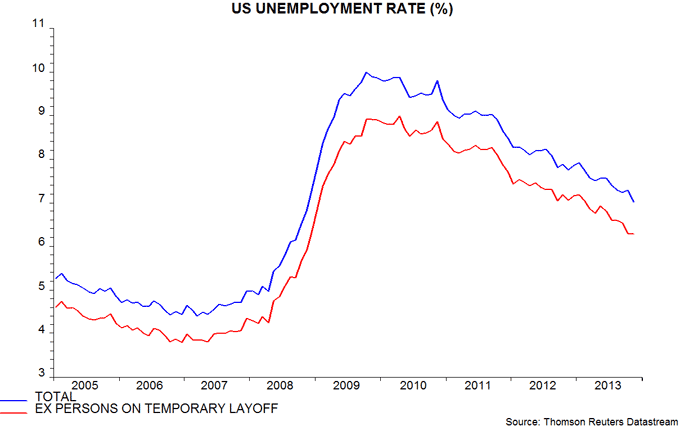A post a month ago argued that the US unemployment rate would have fallen to 7.0% in October, rather than risen to 7.3%, but for the government shutdown, which caused a surge in temporary layoffs. The rate duly reached this level (7.02% unrounded) in November as the shutdown distortion unwound – see chart.
In his June press conference, Fed Chairman Bernanke stated that continued labour market improvement supported by a pick-up in economic growth would cause the FOMC to moderate the pace of securities purchases later in 2013. “In this scenario, when asset purchases ultimately come to an end, the unemployment rate would likely be in the vicinity of 7%.”
Mr Bernanke has boxed himself in. He, and his successor, are reluctant to signal the end of QE, partly out of concern that this would cause markets to advance expectations of policy tightening. However, failing even to begin moderating purchases when unemployment is already at the stated terminal value risks undermining the credibility of the Fed’s interest rate guidance.
As previously discussed, one solution would be to announce a reduction in QE purchases this month but simultaneously cut the interest rate on bank reserves from 0.25% to, say, 0.10%. This would underline that QE decisions have no implications for interest rate policy, while raising the possibility that an increase in the velocity of circulation of reserves will offset a slower rate of liquidity injection.